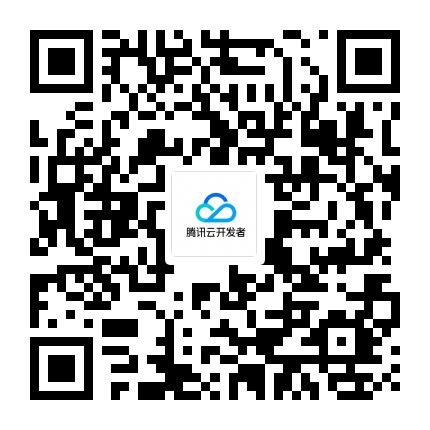WPF自定义控件完整流程(4)
在WPF中创建自定义控件的完整流程
1. 选择控件基类
根据功能需求选择合适的基类:
| 基类类型 | 适用场景 | 特点 | |--------------------|-----------------------------------|-----------------------------| | UserControl | 快速组合现有控件 | 设计器支持,不可模板化 | | Control | 需要完全自定义外观和行为的控件 | 支持模板化,高可扩展性 | | ContentControl | 包含单个子元素的容器控件 | 支持内容模型 | | ItemsControl | 展示集合数据的控件 | 支持项模板和面板定制 |
示例代码(继承Control):
public class CustomButton : Control
{
static CustomButton()
{
DefaultStyleKeyProperty.OverrideMetadata(
typeof(CustomButton),
new FrameworkPropertyMetadata(typeof(CustomButton)));
}
}
2. 定义依赖属性
使用依赖属性系统实现数据绑定支持:
public class CustomButton : Control
{
// 定义按钮角半径属性
public static readonly DependencyProperty CornerRadiusProperty =
DependencyProperty.Register(
name: "CornerRadius",
propertyType: typeof(CornerRadius),
ownerType: typeof(CustomButton),
new FrameworkPropertyMetadata(
defaultValue: new CornerRadius(4),
FrameworkPropertyMetadataOptions.AffectsRender));
// CLR属性包装器
public CornerRadius CornerRadius
{
get => (CornerRadius)GetValue(CornerRadiusProperty);
set => SetValue(CornerRadiusProperty, value);
}
}
属性注册参数说明:
name:属性名称
propertyType:属性类型(必须使用可冻结类型)
ownerType:所属控件类型
defaultValue:默认值
metadataOptions:影响渲染/布局的选项
3. 创建控件模板
在Themes/Generic.xaml中定义默认外观:
<ResourceDictionary
xmlns="http://schemas.microsoft.com/winfx/2006/xaml/presentation"
xmlns:x="http://schemas.microsoft.com/winfx/2006/xaml"
xmlns:local="clr-namespace:YourNamespace">
<Style TargetType="{x:Type local:CustomButton}">
<Setter Property="Template">
<Setter.Value>
<ControlTemplate TargetType="{x:Type local:CustomButton}">
<!-- 模板结构 -->
<Border x:Name="border"
Background="{TemplateBinding Background}"
CornerRadius="{TemplateBinding CornerRadius}"
BorderBrush="{TemplateBinding BorderBrush}"
BorderThickness="{TemplateBinding BorderThickness}">
<ContentPresenter
HorizontalAlignment="{TemplateBinding HorizontalContentAlignment}"
VerticalAlignment="{TemplateBinding VerticalContentAlignment}"/>
</Border>
<!-- 视觉状态 -->
<ControlTemplate.Triggers>
<Trigger Property="IsMouseOver" Value="True">
<Setter TargetName="border"
Property="Background"
Value="#FFE0E0E0"/>
</Trigger>
</ControlTemplate.Triggers>
</ControlTemplate>
</Setter.Value>
</Setter>
</Style>
模板设计要点:
使用TemplateBinding关联控件属性
命名模板部件遵循PART_前缀规范
定义视觉状态触发器实现交互效果
4. 实现控件逻辑
添加交互逻辑和事件处理:
public class CustomButton : Control
{
// 定义路由事件
public static readonly RoutedEvent SpecialClickEvent =
EventManager.RegisterRoutedEvent(
"SpecialClick",
RoutingStrategy.Bubble,
typeof(RoutedEventHandler),
typeof(CustomButton));
// 事件包装器
public event RoutedEventHandler SpecialClick
{
add => AddHandler(SpecialClickEvent, value);
remove => RemoveHandler(SpecialClickEvent, value);
}
// 重写鼠标事件
protected override void OnMouseLeftButtonDown(MouseButtonEventArgs e)
{
base.OnMouseLeftButtonDown(e);
RaiseEvent(new RoutedEventArgs(SpecialClickEvent, this));
}
// 获取模板部件
private Border _border;
public override void OnApplyTemplate()
{
base.OnApplyTemplate();
_border = GetTemplateChild("border") as Border;
if (_border != null)
{
_border.MouseEnter += OnBorderMouseEnter;
}
}
}
5. 注册资源字典
确保项目正确识别控件模板:
<ResourceDictionary>
<ResourceDictionary.MergedDictionaries>
<ResourceDictionary Source="/YourAssembly;component/Themes/Generic.xaml"/>
</ResourceDictionary.MergedDictionaries>
</ResourceDictionary>
重要验证点:
确认程序集名称与Source路径一致
检查XAML文件的生成操作是否为Page
确保资源字典路径大小写正确
6. 使用自定义控件
在XAML中引用并配置:
<Window
xmlns:local="clr-namespace:YourNamespace;assembly=YourAssembly">
<Grid>
<local:CustomButton
Content="Click Me"
CornerRadius="8"
Background="#FF2196F3"
BorderThickness="2"
SpecialClick="CustomButton_SpecialClick"/>
</Grid>
调试技巧:
使用Snoop工具检查可视化树
在代码中验证模板部件是否成功获取
检查依赖属性绑定是否正确更新
使用PresentationTraceSources.TraceLevel=High调试绑定
高级实现技巧
视觉状态管理
// 定义视觉状态组
VisualStateManager.GoToState(this, "Pressed", true);
// 在模板中添加状态动画
<VisualState x:Name="Normal"/>
<VisualState x:Name="Pressed">
<Storyboard>
To="DarkBlue" Duration="0:0:0.2"/>
</Storyboard>
</VisualState>
</VisualStateGroup>
性能优化方案
// 使用DrawingVisual进行复杂渲染
protected override void OnRender(DrawingContext drawingContext)
{
var geometry = new StreamGeometry();
using (var context = geometry.Open())
{
context.BeginFigure(new Point(0, 0), true, true);
context.LineTo(new Point(50, 50), true, false);
}
geometry.Freeze();
drawingContext.DrawGeometry(Brushes.Black, null, geometry);
}
支持主题切换
Themes/
├─ Generic.xaml (默认主题)
├─ DarkTheme.xaml (深色主题)
└─ HighContrast.xaml (高对比度主题)
- 发表于:
- 原文链接:https://page.om.qq.com/page/OfaMKW3cfnmih4mmppOmcupg0
- 腾讯「腾讯云开发者社区」是腾讯内容开放平台帐号(企鹅号)传播渠道之一,根据《腾讯内容开放平台服务协议》转载发布内容。
- 如有侵权,请联系 cloudcommunity@tencent.com 删除。

